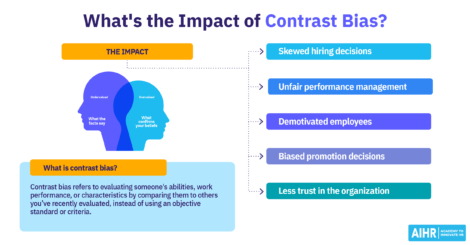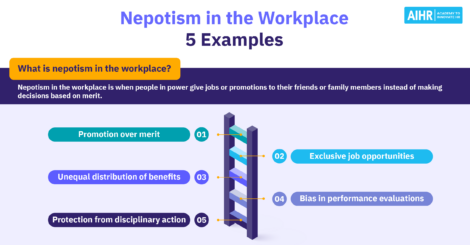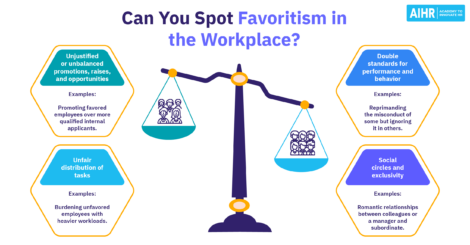Example Non-Discrimination Policy & Why You Need One

Diversity and inclusion is about more than just hiring people with a variety of skin tones. You need a non discrimination policy in your workplace, and this article will help you write one that reflects your company’s commitment to treating everyone equally.
Content
Why you need a non-discrimination policy in the workplace
Non discrimination policy statement example
Other non-discrimination policies
Last but not least – Be consistent
FAQ
Why you need a non-discrimination policy in the workplace
There are various reasons why organizations need to have a non-discrimination policy including:
- Employer Brand. When people look for a new job, they want to work for a business that treats everyone fairly – regardless of race, gender, national origin, or other identifying characteristics. A non-discrimination policy helps your business state clearly what its values are.
If you lack a non-discrimination policy because, of course, you operate fairly, or your local law prohibits discrimination, you may find that many candidates don’t feel comfortable applying to your job. - Compliance. Every country has differing laws regarding discrimination. Some countries require you to consider citizens before other candidates, while others require you to consider anyone with a work permit equally. Some countries have strict discrimination rules, while others are laxer.
At a minimum, your non-discrimination policy needs to comply with all country and local laws. You can, of course, provide stronger protections for employees than the law allows. - Clarity on employee behavior. A non-discrimination policy also officially lets managers and other employees know what is and what is not acceptable within your country. If an employee misbehaves, it’s far easier to point to a policy than refer to a law the employee may or may not have ever heard of.
- Fights bias. Having and enforcing a clear policy benefits your company because employees, candidates, and managers know how to act and what the company expects. They may have individual biases, but they understand clearly that those need to be left outside of the office.
Non discrimination policy statement example
Here is a sample non discrimination policy that you can edit or adjust for your business. Please keep in mind that this is just an example of what a basic policy could look like. The text does not take into account any relevant local laws and regulations and it’s not a legal document.
[Company] Non-Discrimination Policy Statement
At our [Company], we value all employees and job candidates as unique individuals, and we welcome the variety of experiences they bring to our company. As such, we have a strict non-discrimination policy. We believe everyone should be treated equally regardless of race, sex, gender identification, sexual orientation, national origin, native language, religion, age, disability, marital status, citizenship, genetic information, pregnancy, or any other characteristic protected by law. If you feel that you have been discriminated against, please let your manager or Human Resources Department know as soon as possible. Every complaint will be appropriately investigated.
Right to Work in Professional Environment
Every employee has the right to work in a professional environment where their knowledge, skills, and abilities are the critical factors in their success. [Company] expects all employees to maintain standards of propriety, promote equal opportunity, treat everyone professionally, and act without bias.
Zero tolerance for harassment
[Company] has a zero-tolerance policy for sexual harassment or discrimination, racial harassment or discrimination, or any other form of harassment and discrimination (religious, language, sexual orientation, et cetera). If you feel that you have been harassed or that an employee has discriminated against you,
Sexual harassment includes unwanted sexual or romantic overtures, inappropriate sexual jokes, or comments regarding sexual activities. Employees should never access pornography on company-owned equipment, even off company property. Using your personal device to access pornography while working or in the company of other employees is also forbidden.
Romantic relationships between managers and anyone in their reporting line are strictly prohibited
Racial, national origin, ethnic, or language discrimination can consist of jokes, negative comments, or forbidding employees from speaking the language of their choice while on non-official business. The official language of the company is [language], and we will provide all formal documents in this language. Employees are free to speak their preferred language during breaks, at lunch, or when speaking with people who also speak their preferred language. However, official meetings will be conducted in [language], and all documentation will be in this language.
If you are not comfortable reporting harassment in [language], you may report it in your preferred language, and [company] will translate your report.
[Company] will make every reasonable effort to train and inform all employees regarding these policies. Each employee will certify yearly that they have read with and agree to uphold company all company policies, including those regarding harassment and discrimination.
Disability discrimination
[Company] believes everyone has the right to work. An employee with a disability who can perform the core functions of the jobs, with or without reasonable accommodation, is entitled to the same protection and respect as other employees.
Retaliation
[Company] prohibits retaliation against any person who files a complaint against harassment or discrimination. We encourage employees to come forward and participate in investigations. [Company] will make all reasonable efforts to keep investigations confidential, and to protect people who make complaints.
If an employee retaliates against another employee for reporting harassment or discrimination, that employee will face serious consequences up to and including termination.
Reporting procedure
Any employee who feels they have been harassed, discriminated against, or otherwise treated negatively because of their race, religion, gender, or other characteristics, should report the harassment to one of the following people:
- Any human resources employee.
- The direct manager/supervisor.
- Anyone in their supervisory line (manager, director, et cetera).
Employees will not be disciplined in any manner for failing to report something that occurred to them. Nor will the company retaliate for any good faith report. A good faith report means that the employee believes that something inappropriate happened, even if the investigation determines no inappropriate behavior occurred.
[Company] will then conduct an investigation. This may take a considerable amount of time, depending on the situation. [Company] expects all employees to participate in the investigation and keep things confidential as allowed by law. At the end of the investigation, the investigating party (usually a Human Resources staff member, but occasionally someone else, or even an outside investigator) will issue a report and a recommendation. The employee who reported the incident will be informed that the investigation is finished.
Any employee accused of inappropriate behavior will be treated with respect. If the accusation is serious and credible, the employee may be suspended, with or without pay, during the duration of the investigation. The accused employee will be told the outcome of the investigation. If the investigation reveals that the employee was at fault, the accused employee may be subject to discipline. This can include anything from a verbal reprimand to termination, depending on the situation and the severity of the issue.
If an employee makes a bad faith complaint, that will be considered harassment. A bad faith complaint is one where the complainant knowingly lies or misrepresents the situation to accuse a coworker, damage someone’s reputation, or to get personal gain.
Either party is allowed to appeal the decision. You can appeal the decision by filing a written report with the head of Human Resources.
Other non-discrimination policies
Your company’s non discrimination policy can reflect your company and culture and can vary wildly. For example, the World Health Organization describes non-discrimination in 59 words:
“The principle of non-discrimination seeks “to guarantee that human rights are exercised without discrimination of any kind based on race, colour, sex, language, religion, political or other opinion, national or social origin, property, birth or other status such as disability, age, marital and family status, sexual orientation and gender identity, health status, place of residence, economic and social situation”.
On the other extreme, the Society for Human Resource Management (SHRM) uses 1292 words in its sample policy, citing specific laws, and giving detailed descriptions of each aspect of its policy.
The United States’ Equal Employment Opportunity Commission gives an outline of things that US-based employers should include in their non-discrimination policies. This includes a description of what characteristics are protected (this will vary from country to country), who the employees would report harassment/discrimination to, confidentiality policies, retaliation policies, investigation procedures, and other things you may need to write an effective policy. It’s an excellent outline to begin your policy.
Workable provides an anti-discrimination policy that includes actionable items for the company. These include:
To ensure that our conduct and processes are fair and lawful, we:
- Use inclusive language in job ads and include EEO statements.
- Set formal job-related criteria to hire, promote, and reward team members.
- Offer compensation and benefits according to position, seniority, qualifications, and performance, not protected characteristics.
- Accommodate people with disabilities.
- Require managers to keep detailed records of their decisions concerning their team members and job candidates.
This type of positively written policy may work better for a forward-thinking organization. Instead of creating a list of rules that people must not do, this gives people ideas on what to do and how to carry them out.

The U.K. law firm, Pain Smith, gives a sample non-discrimination policy that applies to how companies should treat clients as well as their employees. This may be an important aspect of your non-discrimination policies if your business deals with outside people regularly. Additionally, your employees should know how to report inappropriate behavior from clients or vendors. Pain Smith also includes definitions of terms, such as:
Forms of Discrimination – The following are the kinds of discrimination, which are against the firm’s policy:
(a) Direct discrimination, where a person is treated less favourably on the basis of a ground which is unlawful;
(b) Indirect discrimination, where a provision, criterion or practice which seems to be lawful would create a significant disadvantage for a substantial number of one group of persons compared with other persons on the basis of an unlawful ground unless that provision, criterion, or practice is objectively justified by a legitimate aim and the means of achieving that aim are appropriate and necessary;
(c) Victimisation, where someone is treated less favourably than others because he or she has taken action in respect of discrimination on unlawful grounds;
(d) Harassment, when unwanted conduct related to any unlawful ground takes place with the purpose or effect of creating an intimidating, hostile, degrading, humiliating, or offensive environment for any person. This is not limited to physical acts and may include verbal and non-verbal communications and gestures.
Last but not least – Be consistent
There are numerous different ways to write your non-discrimination policy, but the important thing is not getting it written, but implementing it and following it fairly.
Sometimes, companies are tempted to allow certain high performing, highly paid individuals to violate these guidelines. While laws (generally) prohibit discrimination at any level, companies sometimes feel confident in offering financial settlements to victims rather than addressing the root cause or disciplining the offenders. If your company follows this pattern, you may find your employees becoming disengaged and your turnover increasing. Eventually, someone will refuse the settlement and go to the courts or the court of public opinion on social media.
It is far better, both financially and for your reputation, to include your senior employees and top performers in the same set of rules that everyone else follows. Your company should not formally or informally exempt senior leaders or highly compensated employees from non-discrimination policies. These people should also face discipline, up to and including termination if they violate your policies or local laws.
It may be necessary to hire an outside investigator to investigate accusations against senior leaders. This helps keep them from exercising undue pressure on investigators.
If you don’t have a non-discrimination policy in place right now, you can use the information in this article as inspiration to write a document that can guide your business.
FAQ
There are various reasons why organizations need to have a non-discrimination policy. It provides clarity to employees on acceptable behavior, it helps in attracting candidates, it ensures compliance with (local) laws and regulation and it helps to reduce bias.
A company’s non discrimination policy reflects that organization and its culture and can, therefore, vary wildly. Some companies have short policies while others prefer a longer version or like to include actionable items in their policy.
When it comes to the implementation of a non discrimination policy, it’s important to make sure you include everyone – senior employees and highly compensated employees too – in the same set of rules that everybody else follows. No one should formally or informally be exempt from non-discrimination policies.
Weekly update
Stay up-to-date with the latest news, trends, and resources in HR
Learn more
Related articles
Are you ready for the future of HR?
Learn modern and relevant HR skills, online












